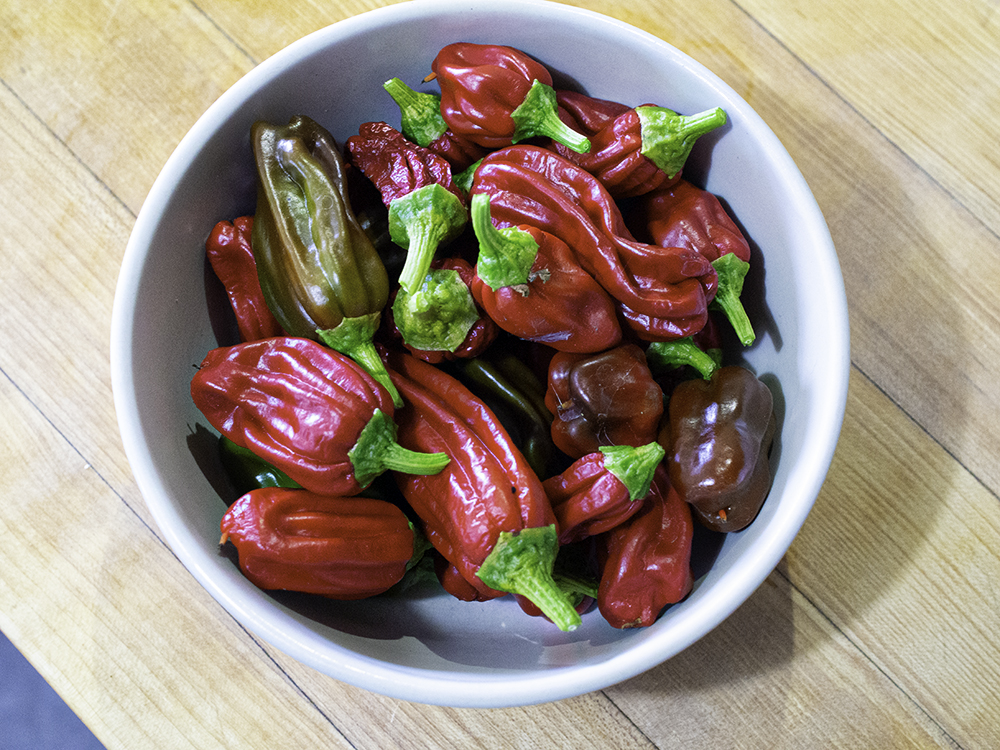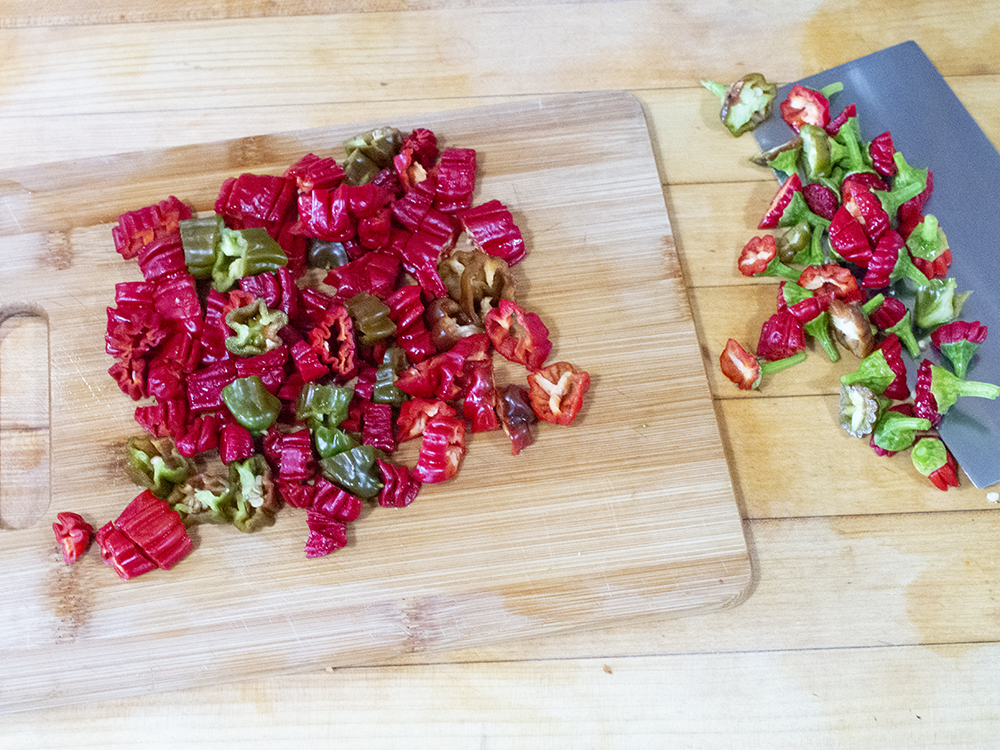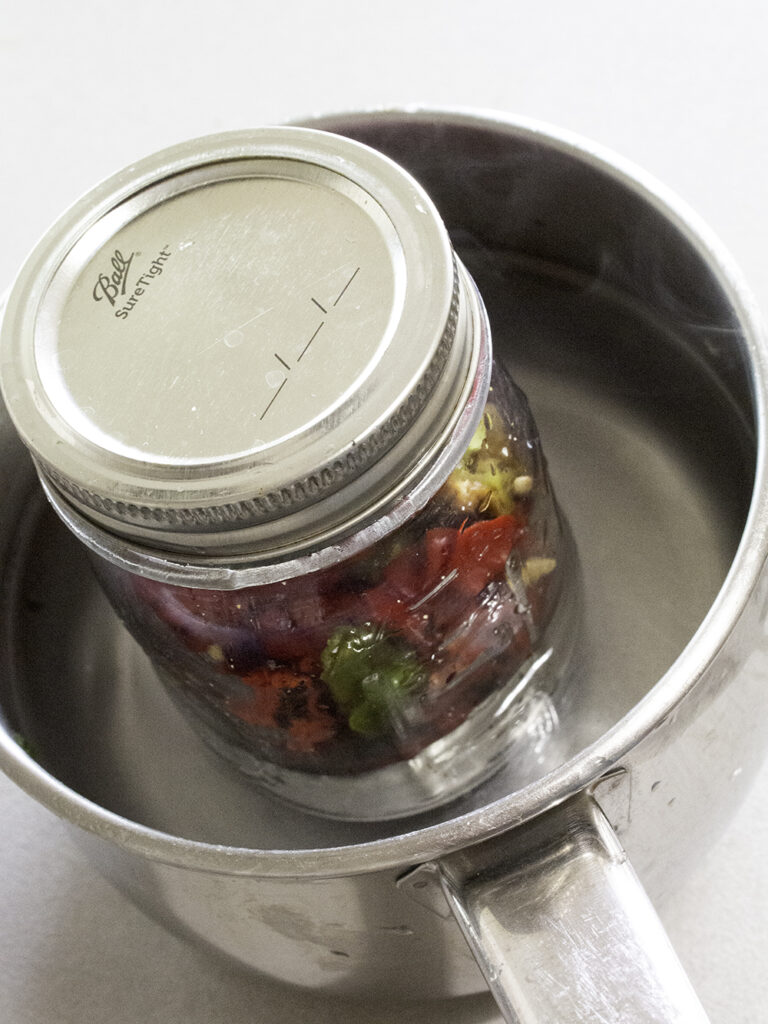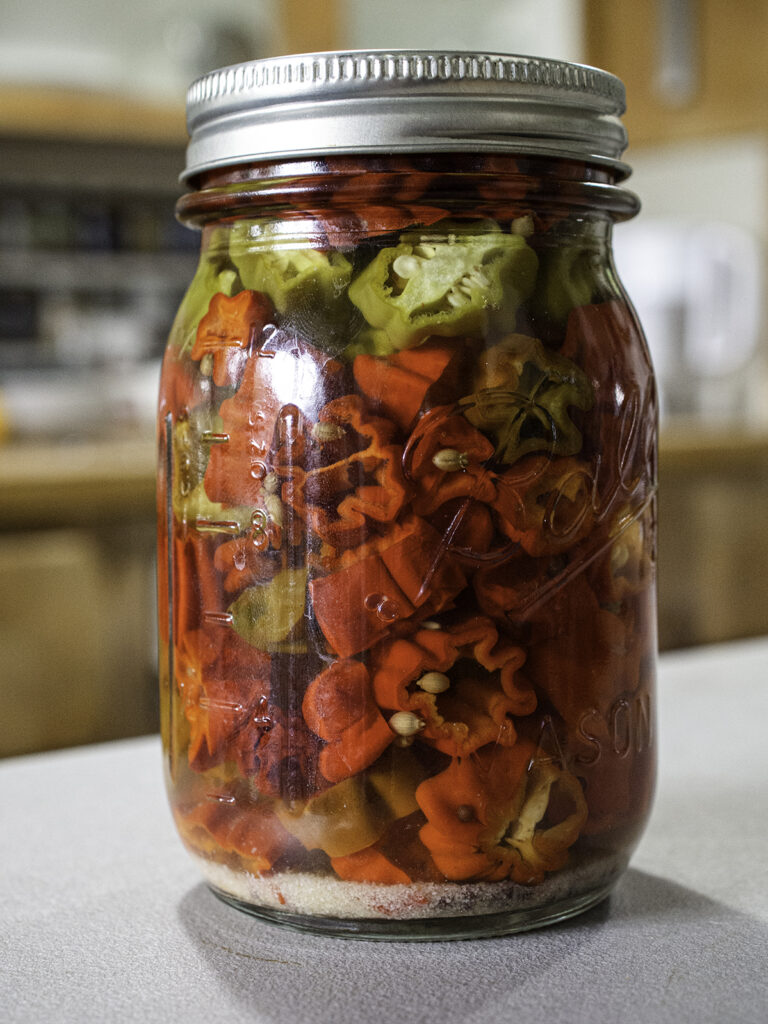This year we have several — well, four — pepper plants in the garden, all ready for harvest now that it’s September. In the past I have dried some of the peppers and cooked or eaten some fresh, but I also usually ended up wasting a bunch. So I decided to quick pickle some of the peppers.
I thought I’d begin with the mildest of our peppers, the pasilla bajio. According to Gardening Know How
This chili’s name in Spanish literally means “little raisin.” This is a slight misnomer, since the pepper is much bigger than a raisin, usually reaching 6 to 9 inches (15-23 cm.) in length and 1 inch (2.5 cm.) in diameter. It’s the color of the pepper, which turns a very dark brown when it matures, that earns the plant its name. Pasillas can be harvested green and immature to make sauces and salsas. They can also be harvested mature and dried. It’s in this form that they are used, along with ancho and guajillo chiles, to make the classic Mexican mole sauce. As chilies go, pasillas are not particularly hot. They have a Scoville rating of 1,000 to 2,500, which means they are equal to less hot than a mild jalapeno. As they mature and become darker in color, they also get hotter. They mostly have a rich, pleasant, almost berry-like flavor.
Quick pickling is simplicity itself. In essence you just cram everything in a jar and cover with a mixture of water and vinegar. Then eat in a day or two. Quick pickling is a great way to easily preserve produce.

I picked a batch of peppers that I thought would fill a twelve-ounce mason jar. I chose a mix of ripe and less ripe peppers. The greener ones add more crispness, the riper ones a bit more heat.

After rinsing the peppers (all our produce is organic) I removed the stems and sliced them. Slicing is optional, but it gives a stronger flavor as the slices soak up the brine better than whole pickles would. It turned out I had too few peppers for my jar so I added some more, ending up with about half a pound for the twelve-ounce jar.
I put the peppers in the jar and added some spices. This is a place to experiment. I used black mustard seeds, cardamom seeds, and garlic powder. My secret ingredient was a couple of dashes of Old Tom’s Aromatic Bitters. Since you don’t have these (I don’t sell them, but I do list the ingredients at the link), you could substitute angostura bitters, if you would like to try this. I think it adds subtlety and complexity.
Then I boiled a cup of water with half a cup of distilled white vinegar, along with a teaspoon of salt and a teaspoon of sugar. Apple cider, white wine, or rice vinegar could also be used. White vinegar provides clarity and doesn’t affect the color of the pickled peppers, but some people find its taste harsh compared to alternatives. (I’m fine with it.)

Pour the boiled liquid over the mixture. It’s best to stuff the jar full so that everything is well submerged rather than floating on the top. I heated the jar in a pan of hot tap water so that the boiling liquid would not cause it to crack.

That’s all there is to it. It’s said that the quick pickles are ready for eating in four hours, but I think waiting a day or two is better. They will keep in the refrigerator for two or three months — but they’re not likely to last that long! You can use them in a soup or salad or as a garnish. They would be good with nachos or tortillas. They would even work in a Bloody Mary. Enjoy!
